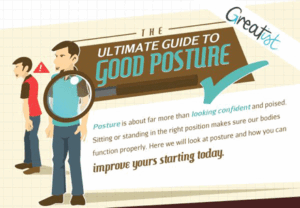You Scream. They Scream. We ALL Scream about Sun Screen!
Being that this is a mid summer newsletter, I hope this information doesn’t reach you too late. Unless you have been living in a dark cave for the past 20 years, you have likely read that we should be applying sun screen if we plan on being in the sun (especially if you’ve been living in the aforementioned cave). Unlike the dog days of summer circa 1987 when we would lube up in Johnson & Johnson Baby Oil and sauté ourselves, we now know that too much sun is no bueno.
However, like any other health concern of our day, there is more than enough fear mongering to give us a heart attack long before we can ever get a sun burn or the feared ‘Big C’. You can walk into any store and find shelves full of sunscreen with SPF (Sun Protection Factor) that range from 10-100. They can be applied as a lotion, glide stick or spray. So how do you know what is the best choice?
The chemicals that form a product’s SPF are aimed at blocking ultraviolet B rays, which are the primary cause of sunburn and non-melanoma skin cancers, such as squamous cell carcinoma (von Thaler 2010). Ultraviolet A rays penetrate deeper into the skin and are harder to block with sunscreen ingredients approved by the federal Food and Drug Administration for use in U.S. sunscreens. UVA exposure suppresses the immune system, causes harmful free radicals to form in skin, and is associated with higher risk of developing melanoma.
Bottom line is that higher SPF numbers have been reported to lull us into a fall sense of security. Sunbathers often assume that they get twice as much protection from SPF 100 sunscreen as from SPF 50. In reality, the extra protection is negligible. Properly applied SPF 50 sunscreen blocks 98 percent of UVB rays; SPF 100 blocks 99 percent. When used correctly, sunscreen with SPF values in the range of 30 to 50 will offer adequate sunburn protection, even for people most sensitive to sunburn.
The key component to avoiding getting burnt (literally and figuratively) is to reapply every 2-3 hours and to use lotions, not sprays. Sprays may be convenient, but they tend to cover less area and the areas they do cover are typically covered unevenly and with less than you would think. Lotions work best. If you are applying to an infant, it’s always best to apply to a small test area first, like the back of the wrist to see if they have any sensitivity and/or allergic reactions.
We have come a long way from rubbing Crisco on our bodies and holding a reflective board around our faces. Heed the harmful rays and don’t let all the noise about SPF block you from enjoying the rest of the summer.
Of course, no article about sun screen would be complete without reflecting back on one of the most infamous commencement speeches to the Class of 1999; Baz Luhrmann’s Wear Sun Screen!
Ready to #feelbetter?
You're just a click away from a wicked good massage!
-

60 Minute Massage Gift Card
$170.00 Add to cart -

90 Minute Massage Gift Card
$255.00 Add to cart -

Mini Aer Small Room Air Purifier
$149.00 Add to cart -
Sale!

Thera-Pearl Sports Pack/Hot Cold
Original price was: $14.99.$12.99Current price is: $12.99. Add to cart -

3 Somadome Sessions Gift Card
$135.00 Add to cart -

TheraBand CLX Connective Loop
$14.99 Select options -

6 Somadome Sessions Gift Card
$270.00 Add to cart -
Sale!

Biofreeze
Original price was: $14.99.$12.99Current price is: $12.99. Add to cart
Passion Mountain
I was at an event recently and was asked by somebody how I could STILL be so passionate for what I do. He said, “What I mean is that you talk about what you do with the passion of child flipping through a new pack of baseball cards. I wish I was that passionate about…
Read MoreFish You Should Scale Back On
New Englander’s love their seafood and we deepen our love affair every summer when our favorite crustaceans, ‘lobstah’ is a plentiful. But what is the best seafood for us and what are the ones that we should be staying away from regardless of how yummy they may be? Monterey Bay Aquarium has combined data from…
Read MoreSports are a Great Metaphor
It’s no secret that my life has always revolved around athletics. From my early days playing pop warner football, through my college years of lacrosse and on into the various community leagues since, being part of a team has always been where I feel most comfortable. What I enjoy most about being part of a…
Read MoreWhat is an Expert?
“An expert is someone widely recognized as a reliable source of technique or skill whose faculty for judging or deciding rightly, justly, or wisely is accorded authority and status by their peers or the public in a specific well-distinguished domain.” – Wikipedia This past month I flew to Atlanta to present a few classes in…
Read MoreThe Power of a Hug
Originally Posted 5/1/2014; following the 1 year anniversary of the Boston Marathon Bombings and our mission to rebound after these horrible attacks on our city. We helped orchestrate the ‘One Run for Boston’; a 3328.2 NON-STOP running relay from LA to Boston, raising over $500K for the victims and survivors of the events of 4/20/2013.…
Read MoreTips from the Table
Without fail, every marathon season, I am asked by my patients, what kind of advice I would offer up to them as they prepare to run the Boston marathon. I first admit that I have never (nor will ever) run a marathon, but given my unique insight of spending 1000’s of hours alone in a…
Read MoreShoulder Impingement
The glenohumeral joint is a highly complex articulation. It has the greatest range of motion of any joint in the body. However, its increased motion occurs at the expense of stability, requiring the soft tissues to play a more critical role in maintaining joint integrity. As a result of increased mechanical demands, numerous soft-tissue injuries…
Read MoreTrain, train, train. Train of fools.
In my seventeen years as a massage therapist, I am still amazed by some of the things I see in my office. Being situated 1/10th of a mile from the finish line of one of the most prestigious marathons in the world, the Boston Marathon, we see more than our fair share of runners coming…
Read MoreAchilles Tendon Disorder
Achilles Tendon Disorder Massage therapists see many clients with active lifestyles. Running, jumping, dancing, climbing, or any number of other activities can put serious stress on the Achilles tendon (AT). AT disorders also can contribute to biomechanical disorders in the foot and lower extremity. That is why it is important for the massage practitioner to…
Read More


